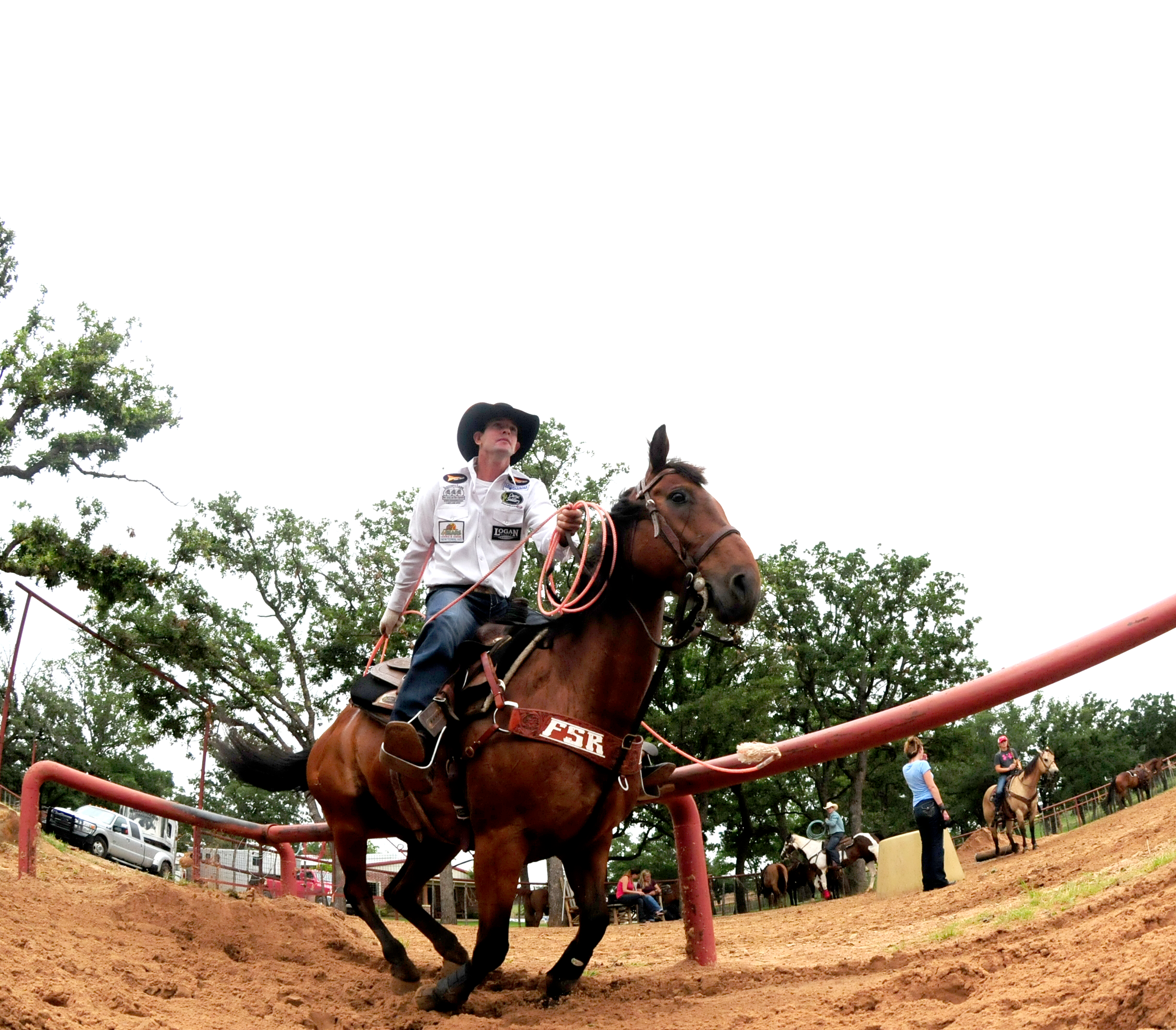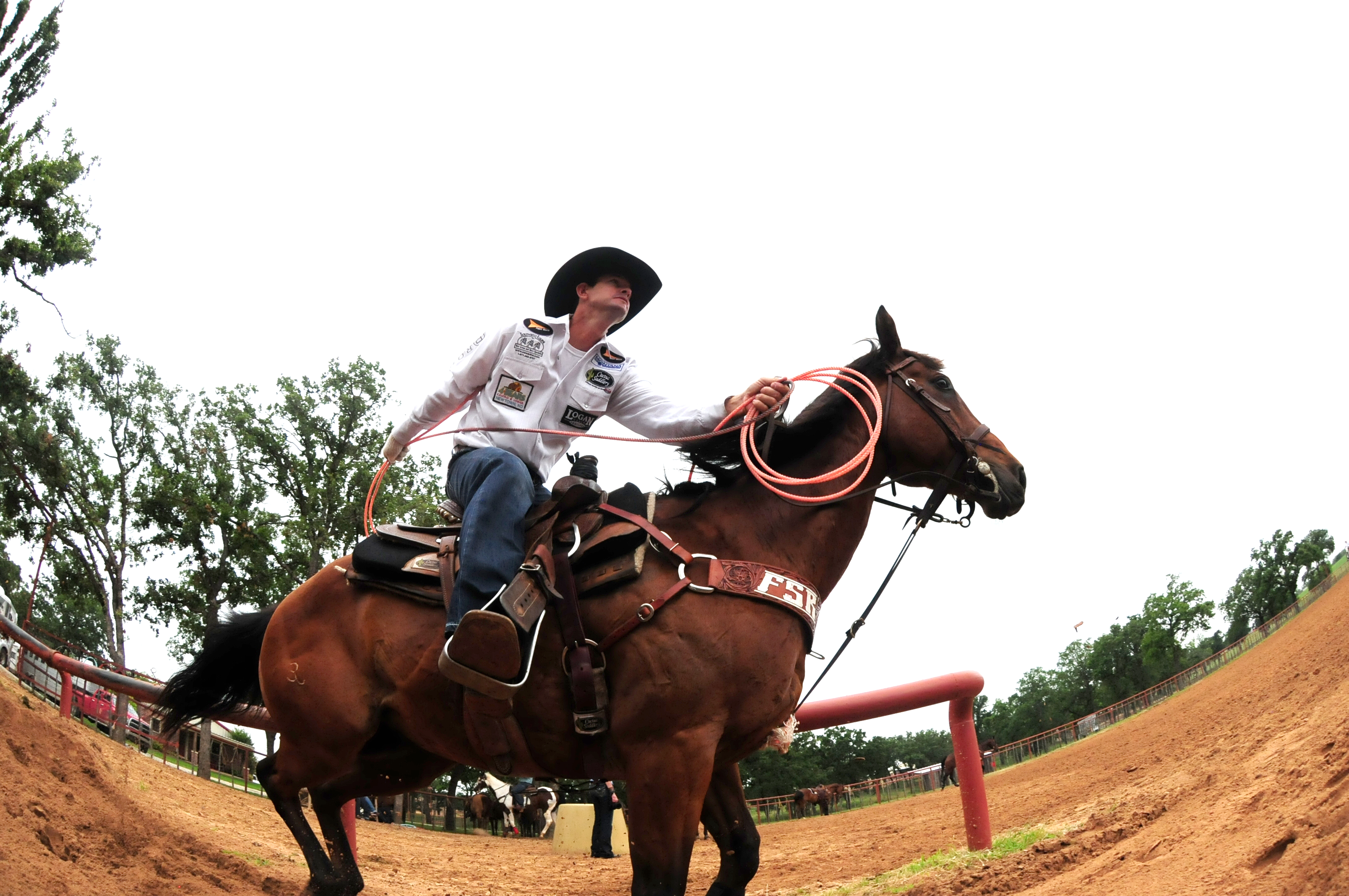If you can be consistent and do the right thing over and over again, and pattern your horse to go to a spot, it makes it easier for you to rope. It makes it easier for you to set the run up to handle the steer and in turn that gives your heeler confidence to know what’s coming. If you do the right thing over and over again, your heeler is going to feed off of that, catch more and throw faster, and get confidence in you and in the run. If you keep making that run over and over again, all of a sudden it doesn’t matter where you are or what kind of money is up, you’re confident because your horse is so patterned to do the right thing. Your mistakes will be limited.
1. The initial part of the run, where I’m leaving the corner, I’ve got my left hand forward, I’m not pulling on the bridle reins and my horse is leaving flat. I’m not impeding his progress toward the steer. My body position is balanced and I’ve got my right hand in position to start my first swing as I leave the mouth of the box. I try to ride out the middle of the box. If the box is wider, I go a little more toward the chute. Basically, I want to be in the same position in relationship to the steer every time.

2. My spacing between the steer in this picture is just how I like it. I’m in my lane and the steer is in his lane so I can just ride right to the spot that I want to rope the steer to set up my handle. My rope is up and in position, too, so as soon as I get there I can deliver. The horse is in his left lead, so that will naturally put my left hip a little farther forward. That faces me toward the steer—which you need to be since that’s your target.

3. I’ve got my horse framed up. With my left hand, I’m holding him in until I ask him to go. I don’t let my horse leave until the rope is tight from the steer’s horns to the saddle horn. At that point, when my horse makes a little bit of a move, that will bring the steer with me. He should follow exactly the moves my horse makes—which is why it’s so important to have the rope tight before I move—so I can keep the steer’s head all the way across the arena.

4. The heeler is throwing right now. My horse is just now getting framed up to face. In just about a half a stride, I’ll begin working on my finish. What I do there is put my leg in his side and ask him to pivot around on his front end. I’m taking my left foot out of him and I’ve turned my right foot out and in the next frame I’ll put it in his side to cue him to start facing. He’s beginning to come back across himself and that’s what he needs to do.

5. You hear people say, “You need to ride to the steer.” That’s true in a sense, but not literally. What I like to tell everybody is you need to ride to the position that you’re going to rope from relative to the position of the steer. You’re going to ride to your spot to the left of the steer—not actually to the steer. Teach yourself and your horse to leave the box and get there as fast as you can. Never sacrifice that when you practice.
You want to have the confidence that your horse is going to do the things you trained him to do and he’s going to give you the same look every time. When you have that confidence, competing and making a good solid run no matter what, your draw makes it a lot easier. He knows, no matter what, he has to run to a spot. That’s what you’re training him to do. It just becomes a reaction.













